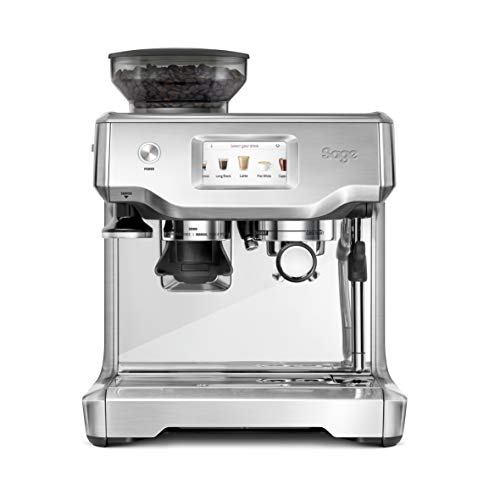Whole Bean Coffee Machine Beans
If your customers are conscientious about their environmental footprint they might be shocked to find out that whole bean coffee machines produce lots of waste in the form of grounds.
Beans have a delicious flavor and can be stored for a long period in a dark, airtight container.
1. Roasted Beans
The first coffee beans that are harvested are green and cannot be used for brewing your morning cup of coffee until they are roast. Roasting is the intricate chemical process that turns raw coffee beans into delicious, fragrant coffee we drink every day.
There are many different kinds of roasts, that determine how flavorful and strong the coffee that is brewed will be. coffee maker bean to cup are determined by the amount of time that beans are roasted and also determine how much caffeine is present in the beverage.
Light roasts are cooked for the most quickly and are characterized with their light brown color. They also do not have oil on the beans. About 350o to 400o the beans will begin to steam due to their internal water vapors that are released. You'll hear the first crack soon after. The first crack is a sign that beans are ready to brew.
During the roasting process, sugars are caramelized and aromatic compounds are formed. These volatile and nonvolatile compounds provide coffee with its distinctive taste and aroma. During this time, it is important to avoid over-roasting the beans, as they lose their distinctive taste and may turn bitter. After roasting, the beans can be cooled by water or air.
2. Water Temperature
When brewing coffee the temperature of the water is among the most important elements. You could end up with bitter coffee using too hot water. If you use cold water, you will end up with weak, or even sour, coffee. Filter or bottle if required, and heat your equipment prior to brewing.
The hotter the water the more quickly it will dissolve oils and flavor compounds that are present in the coffee grounds. The ideal temperature for the brewing process is between 195 and 205 degrees Fahrenheit. This is just below the boiling point of water. This range is a favorite choice amongst many coffee professionals across the globe, and it works well for all brewing methods.
The exact temperature of the brewing process isn't always accurate, as some heat is lost due to the process of evaporation. This is particularly true for manual methods, like pour over or French press. The final temperature of the beverage can be affected by differences in the thermal mass and material of the various brewing equipment.
In general, a hotter coffee brew will yield stronger espresso, but not necessarily for all sensory aspects. In fact, some studies suggest that chocolate, bitter roast, ashy and bitter flavors are more intense at higher temperatures, whereas others like sour taste, decrease with increasing temperature.
3. Grind

The finest beans, the best roast and the best filtered water will not yield a top cup if the grind is not handled correctly. The size of the beans ground is a major factor the determination of flavor and strength. This aspect is crucial to manage in order to test and ensure consistency.
Grind size is defined as the size of the particles of ground beans after they are crushed. Depending on the method of brewing, different grind sizes are optimal. For instance coarsely ground beans can produce a weak cup coffee, while a fine grind will result in an overly bitter cup.
It is essential to select the coffee grinder that provides uniform grinding. This guarantees the highest level of consistency. The use of a burr grinder permits this and also helps ensure that the grounds of coffee are equal size. Blade grinders are not consistent and can result in uneven ground.
Anyone who wants to make the most of their espresso maker should think about buying a bean-to cup machine which includes a grinder and brewing unit. This will allow the beans to be brewed at the peak of their freshness and eliminate the requirement for ground coffee that has been pre-ground. Melitta Bialetti Mypresso offers all of these features in a stylish and modern packaging. It comes with a variety of recipes and eight user profiles that can be customized and an application for smartphones to give you complete control. It has a dual-hopper and is compatible both with ground and whole beans.
4. Brew Time
If the brew interval is too short, you will get a low extraction. You can overextrusion if you are brewing for too long. This can cause bitter compounds that destroy the sweet flavors and sugars in your beverage and leave it with bitter and sour flavor.
If you brew your coffee too long, the sweet spot of optimal extraction will be lost. This results in weak, watery coffee that can be overly acidic and unpleasant to drink. The amount of coffee grounds, the size of the grind and the brewing method will determine the optimal brewing time.
The best bean-to-cup machines usually have a very high quality grinder with adjustable settings. This lets you experiment with brew durations and water temperatures until you find the ideal blend of your coffees.
The brewing process consumes more energy per unit of coffee than any other stage in the supply chain. It is therefore crucial to understand how to control the temperature of the brew in order to reduce waste and improve the taste. However, it can be difficult to control extraction with precision. This is due to the different distribution of particle sizes, the kinetics of dissolution, roasting process, equipment, the character of the water, etc. This study examined TDS and analyzed PE to evaluate the impact of these parameters on the sensory quality of coffee. The TDS and PE values were low although there was some variance between the brews, possibly due to channelling.
